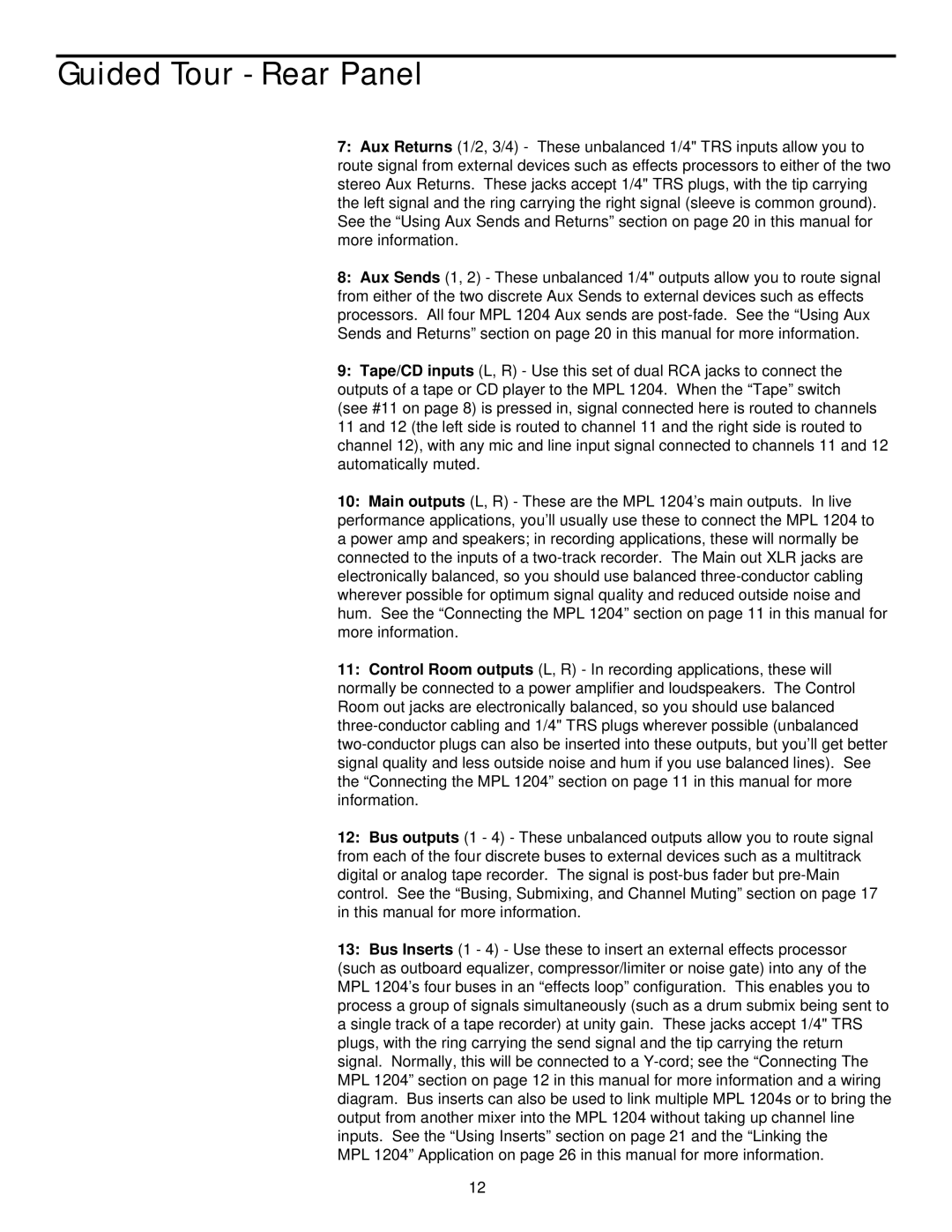Guided Tour - Rear Panel
7:Aux Returns (1/2, 3/4) - These unbalanced 1/4" TRS inputs allow you to route signal from external devices such as effects processors to either of the two stereo Aux Returns. These jacks accept 1/4" TRS plugs, with the tip carrying the left signal and the ring carrying the right signal (sleeve is common ground). See the “Using Aux Sends and Returns” section on page 20 in this manual for more information.
8:Aux Sends (1, 2) - These unbalanced 1/4" outputs allow you to route signal from either of the two discrete Aux Sends to external devices such as effects processors. All four MPL 1204 Aux sends are
9:Tape/CD inputs (L, R) - Use this set of dual RCA jacks to connect the outputs of a tape or CD player to the MPL 1204. When the “Tape” switch (see #11 on page 8) is pressed in, signal connected here is routed to channels 11 and 12 (the left side is routed to channel 11 and the right side is routed to channel 12), with any mic and line input signal connected to channels 11 and 12 automatically muted.
10:Main outputs (L, R) - These are the MPL 1204’s main outputs. In live performance applications, you’ll usually use these to connect the MPL 1204 to a power amp and speakers; in recording applications, these will normally be connected to the inputs of a
11:Control Room outputs (L, R) - In recording applications, these will normally be connected to a power amplifier and loudspeakers. The Control Room out jacks are electronically balanced, so you should use balanced
12:Bus outputs (1 - 4) - These unbalanced outputs allow you to route signal from each of the four discrete buses to external devices such as a multitrack digital or analog tape recorder. The signal is
13:Bus Inserts (1 - 4) - Use these to insert an external effects processor (such as outboard equalizer, compressor/limiter or noise gate) into any of the MPL 1204’s four buses in an “effects loop” configuration. This enables you to process a group of signals simultaneously (such as a drum submix being sent to a single track of a tape recorder) at unity gain. These jacks accept 1/4" TRS plugs, with the ring carrying the send signal and the tip carrying the return signal. Normally, this will be connected to a
MPL 1204” Application on page 26 in this manual for more information.
12
